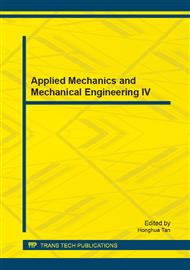[1]
Huaiyu Zhao, Zhangli Li, Penghui Wei. Full excavation based application of transmission linesin the gobi desert region [J]. Journal of geotechnical foundation. 2 012, 26 (4).
Google Scholar
[2]
Zhujian Sheng. Mohr coulomb yield theory [J]. Journal of waterway transportation scientific research. 1980. 01.
Google Scholar
[3]
Li Qin, Lihua Wang. Bored piles foundation of 500 kv transmission lines numerical simulation [J]. Journal of environmental engineering, civil and energy international conference. (2011).
Google Scholar
[4]
Fenglin Gan, Qiuhang Zhang. Transmission tower in miniature pile foundation pile – soil interaction study [J]. Journal of shaanxi power. (2011).
Google Scholar
[5]
Xianlong LU, Ruifeng Zheng, Yongfeng Cheng, Ruiming Tong, With base pull-out test proved that the total excavation base can be used as the gobi gravel soil experimental study [J]. Journal of geotechnical engineering, 2009, 31 (11).
Google Scholar
[6]
Jian Yang, Yufeng Gao, Yongfeng Cheng, Xianlong Lu. Transmission lines inclined excavation of the foundation under horizontal load characteristics [J]. Water conservancy and hydropower science and technology progress, 2008, 28 (4).
Google Scholar
[7]
Xianlong Lu, Zengzhen Qian, Ruiming Tong, Weifeng Zheng. Undisturbed soil excavation foundation gobi gravel soil pull-out test study [J] civil construction and environmental engineering, 2012, (4).
DOI: 10.1109/icmtma.2013.143
Google Scholar


